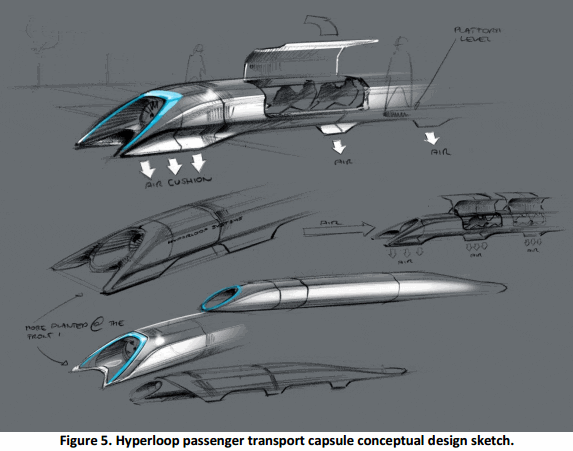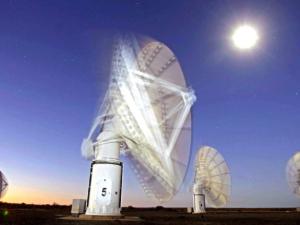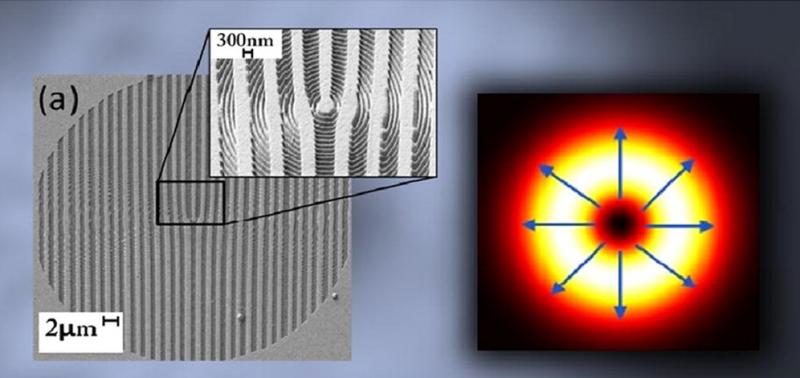“It’s a cross between a Concorde, a rail gun, and an air hockey table.”
Now that the media kerfuffle surrounding Elon Musk‘s Hyperloop transit system proposal has settled down to a dull roar, it’s a good time to step back and consider in detail some of the real innovations and difficult issues raised through analysis of the 57-page Hyperloop plan.
The shortest description of the Hyperloop is Musk’s own bon mot: “It’s a cross between a Concorde, a rail gun, and an air hockey table.”
A slightly more complete description of the concept is that of an elevated, reduced-pressure tube that contains pressurized capsules driven within the tube by a number of linear electric motors. These capsules move with very little friction or drag owing to air bearings that ride on the inner surface of the tube, and a combination of active and passive means to reduce the negative effects of choked airflow on the transportation system.
In this article I am only considering the science and engineering aspects of the Hyperloop. While acknowledging that political issues may actually determine its fate, what concerns us here is whether or not it could work.
A Quick Overview
A reaction many people have to the Hyperloop is that there is nothing new here. While it’s fair to say that all inventors are standing on the shoulders of giants to a certain degree, there are in fact very real innovations in Musk’s proposal.
The Hyperloop has essentially no relationship with the old pneumatic tube transports beyond a certain similarity of appearance. There is, however, quite a bit of overlap with earlier proposals for reduced pressure or vacuum-tube transports. In particular, the early theoretical and experimental work of Robert Goddard, the inventor of the liquid fuel rocket, appears to have the greatest overlap with the Hyperloop.
Goddard’s notes about reduced pressure transports sat in storage for over 30 years, only surfacing after his death in 1945. In US patent 2,511,979, he describes nearly every major feature of the Hyperloop save for the use of linear electric motors for propulsion (he preferred using reaction motors for propulsion), and using special apparatus to minimize the detrimental effects of choked airflow around the capsules. Goddard also described the use of air bearings, but of a very different sort than proposed for the Hyperloop. Many others, of course, have suggested the use of linear electric motors.
To sum up, it would appear that the main innovations in the Hyperloop proposal are the type of air bearings used to reduce friction forces on the moving capsules, and design elements that avoid the limitations encountered when the airflow around the capsules is choked. Let’s take a closer look at these additions.
The Latest Bing News on:
Hyperloop
- Incredible plans for Europe’s first hyperloop that zips commuters between cities in MINS as groundbreaking test beginson April 28, 2024 at 12:45 am
EUROPE’S first futuristic hyperloop is one step closer to completion as engineers believe it can achieve its first high-speed run this summer. The European Hyperloop Centre (EHC), based in ...
- Roberto Vittori, ESA astronauton April 27, 2024 at 9:02 pm
Věda a současná civilizace. Interaktivní rozhovory se světovými odborníky, ve kterých je prostor pro vaše otázky a komentáře. Moderuje Daniel Stach.
- How tall is Elon Musk?on April 26, 2024 at 6:00 am
And because that size tracks with how tall he looks in photos with other people, it’s safe to say that Elon Musk is 6 feet, 2 inches tall. The internet is chaotic—but we’ll break it down for you in ...
- IIT Madras to hold global hyperloop contest next yearon April 23, 2024 at 1:14 pm
IIT Madras hosts global hyperloop conference to introduce futuristic transportation concept, leading up to 2025 competition.
- Construction on America's First High-Speed Rail Has Begunon April 22, 2024 at 6:10 pm
A high-speed rail between Los Angeles and Las Vegas will be the first of its kind in the U.S., the project's proponents say.
- The future of travel is near: Europe’s longest tunnel for testing hyperloop technology opens in the Netherlandson April 22, 2024 at 4:59 pm
Europe’s longest tunnel for testing hyperloop technology opened last month in the Netherlands, with operators hoping passengers can one day be whisked from Amsterdam to Barcelona in a couple of hours.
- Tesla's Cybertruck recall is par for the costly course for Elon Muskon April 22, 2024 at 10:36 am
The company's CEO has proved himself to be much more interested in flashy aesthetics and cool ideas than building something sustainable.
- State-of-the-art testing center pushes forward with new high-speed mode of transportation: 'A significant milestone'on April 20, 2024 at 3:15 am
Hyperloop technology is gaining speed because of the projected benefits over traditional planes, trains, and automobiles. State-of-the-art testing center pushes forward with new high-speed mode of ...
- “Richard Branson-backed” hyperloop startup seeks funding on Bucharest's SeedBlinkon April 19, 2024 at 1:58 am
By Iulian Ernst in Bucharest Swisspod Technologies, a startup founded by Romanian Denis Tudor and Cyril Dénéréaz, announced they seek to raise €200,000 on SeedBlink as part of a total funding round of ...
- Swisspod aims to raise €7 million to revolutionize global transport with hyperloop technologyon April 18, 2024 at 2:59 am
Business - Swisspod Technologies, a startup founded by 2 winners of the SpaceX Hyperloop Competition — Romanian Denis Tudor and Cyril Dénéréaz, announces a new round ...
The Latest Google Headlines on:
Hyperloop
[google_news title=”” keyword=”Hyperloop” num_posts=”10″ blurb_length=”0″ show_thumb=”left”]
The Latest Bing News on:
Vacuum-tube transports
- IIT Madras Hosts Global Hyperloop Conferenceon April 23, 2024 at 12:52 pm
Indian Institute of Technology Madras (IIT Madras) organized a Global Hyperloop Conference on 20th and 21st April 2024 at its Research Park.Titled ‘Parivahan’, the Conference aimed to introduce the ...
- Global Hyperloop Conference, Parivahan, at IIT Madras. Here's what ensuedon April 23, 2024 at 2:50 am
Madras organised a Global Hyperloop Conference on April 20 and 21, 2024 at its Research Park, stated a press release from t ...
- Inside plans for £67billion bullet train that can go 100mph faster than an F1 car and cover 226 miles in just 40 minuteson April 20, 2024 at 2:36 am
JAPAN is set to add another super bullet train to their impressive collection with the introduction of the Chuo Shinkansen. The train is set to reach staggering speeds of up to 311mph and will ...
- Vacuum Blood Collection Tube Market Growth Analysis, Size, Prominent Players, Overview, and Forecast to 2024 to 2032on April 16, 2024 at 4:51 pm
Report Ocean recently published a research report titled “Vacuum Blood Collection Tube Market” 2024 Forecast to 2032 Analysis by Market Trends.” This study delivers accurate economic projections, ...
- Accelerating Testing Processes: KGMU to introduce automated sample transport systemon March 29, 2024 at 6:45 am
As King George’s Medical University (KGMU) prepares to modernise the transportation of pathology samples from the on-campus ward, attendants accompanying patients can now expect a smoother and ...
- Europe’s longest hyperloop test track revives futuristic tube transport hypeon March 27, 2024 at 7:29 pm
raising faint hopes once more that the maglev meets vacuum tube transport technology could be the future. Operators said the facility would help prove the hyperloop’s feasibility, saying it ...
- Dutch hyperloop center aims to advance futuristic transport technologyon March 26, 2024 at 10:33 am
VEENDAM, Netherlands — A 420-meter (quarter-mile) white steel tube running alongside a railway line in the windswept northern Netherlands could usher in a new era in the transportation of people ...
- Hyperloop One's bankruptcy: the end of super-fast trains or just a setback?on December 22, 2023 at 10:45 am
He suggested a network of vacuum tubes in which "pods" would move using magnetic levitation. This innovative solution was designed to transport people and goods at incredible speeds - about 621 ...
- European Railways Of The Future Are Faster Than Elon Musk’s Hyperloopon October 11, 2023 at 2:22 pm
vacuum tube mobility system is nowhere near to seeing the light of day. Yet ambitions for future-fit mobility remain very much alive, particularly across the Atlantic. Contrary to the approach ...
- Thieves, Armed With A Vacuum Cleaner, Still On The Runon September 24, 2010 at 1:39 am
They noticed that Monoprix supermarkets use a pneumatic tube system to transport rolls of cash to ... drilled a big hole in the tube, hooked up a vacuum and sucked the cash out.
The Latest Google Headlines on:
Vacuum-tube transports
[google_news title=”” keyword=”vacuum-tube transports” num_posts=”10″ blurb_length=”0″ show_thumb=”left”]











